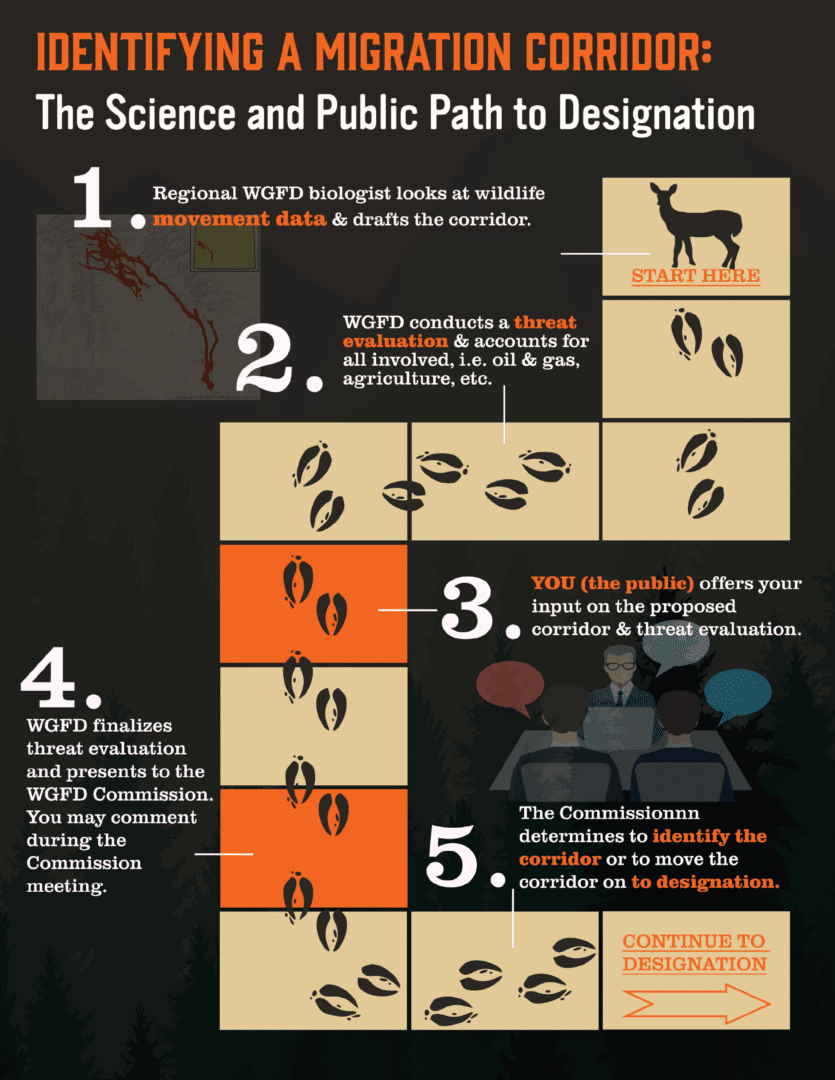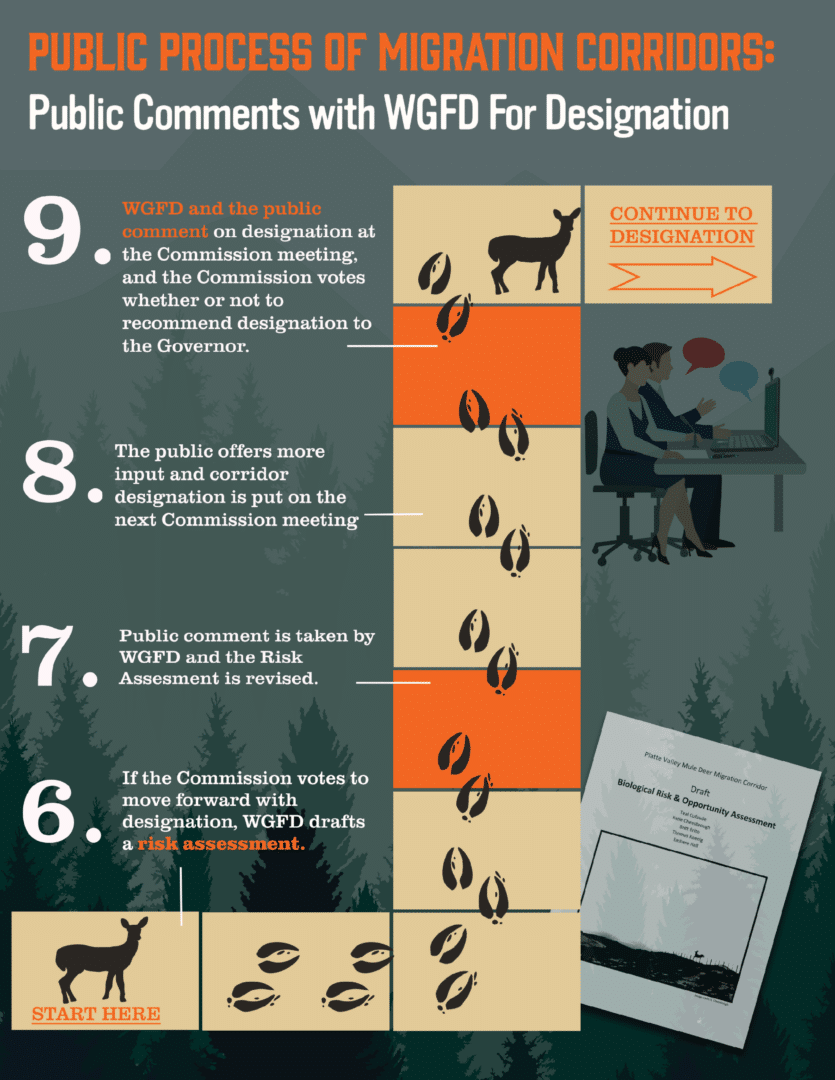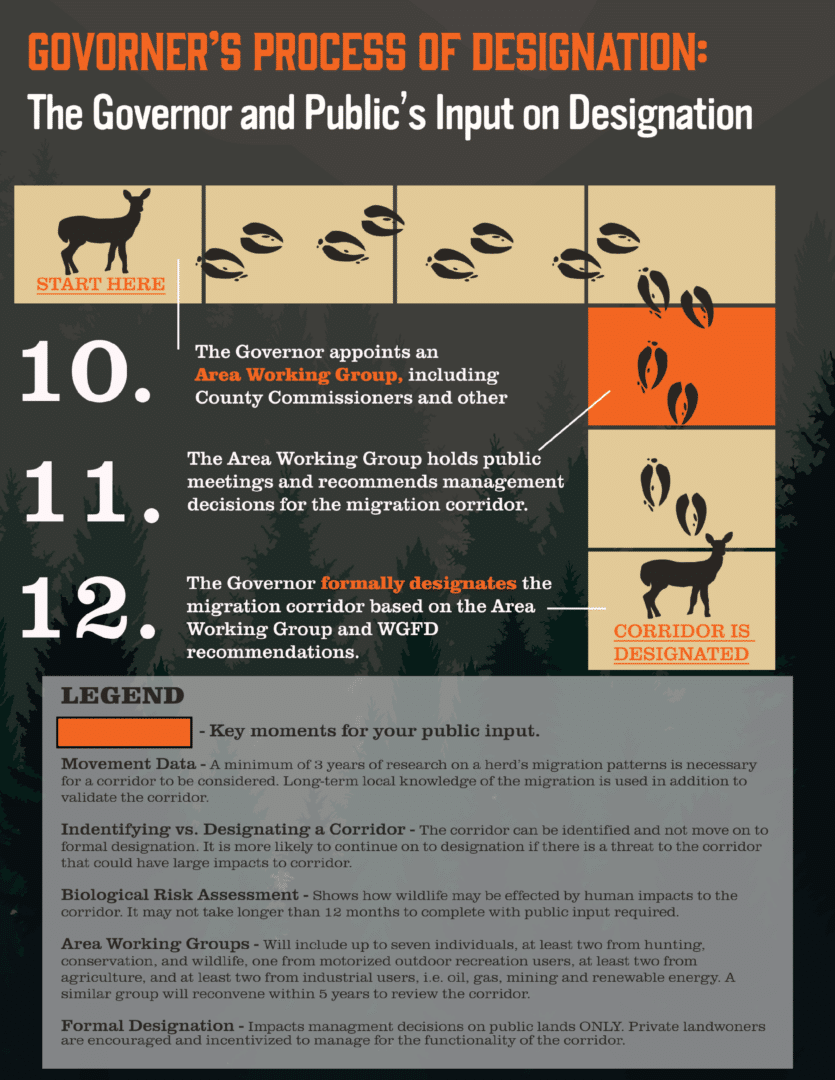In February 2020, Governor Mark Gordon signed Executive Order 2020-01, Wyoming Mule Deer and Antelope Migration Corridor Protection, the first public policy protecting ungulate migration corridors in the United States. Wyoming Wildlife Federation followed the development of the Executive Order (EO) closely and felt that it properly balanced wildlife protections with stakeholder input, while allowing for more flexibility than a legal statute would have for a complex and new issue to the state. We were proud to support the Governor’s Executive Order, and look forward to seeing it working for Wyoming’s wildlife.
But how exactly does the EO work?
The migration corridor designation process outlined in the Executive Order is complex by design; it allows for multiple points of public input and involvement from stakeholders at different stages of the process. We parsed out all the available EO information and broke down the process step-by-step.
Identifying a Corridor
The first portion of the process is the identification of a migration corridor. The Game and Fish Department identifies corridors by reviewing all the available data on ungulate movements through the area, both historic records and more recent GPS collar data. Once they have a drafted corridor, they examine the obstacles to wildlife movements in the area and they draft a brief Threat Evaluation for the corridor.
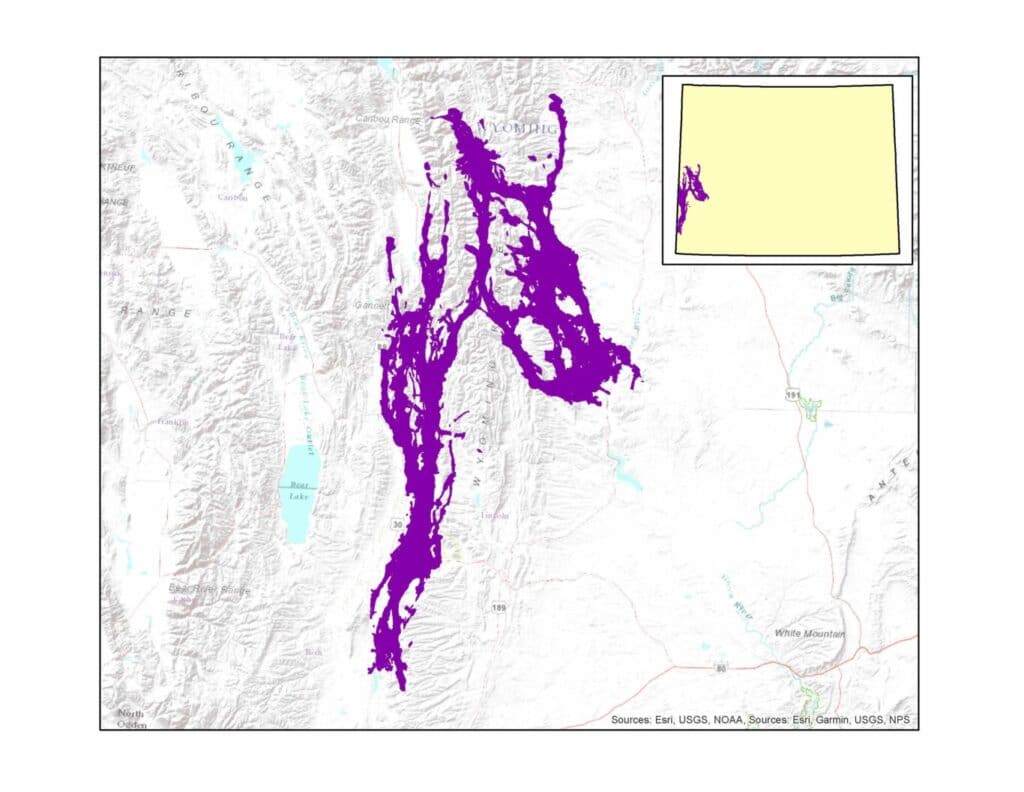
The Department identifies any people, corporations or organizations in the area who may have an interest in the corridor and they’ll reach out to them to ask for their input on the corridor location. This is the first opportunity for public input in the identification process.
Moving Toward Designation
After stakeholder input is worked into the corridor identification and Threat Evaluation, it is finalized and sent to the Game and Fish Commission. It also comes with a recommendation from the Department for the corridor to either remain as identified or to move toward the designation. If the Department believes that there are enough major threats to the migration corridor to impact wildlife movements and populations, they may ask the Commission to pursue corridor designation. This is a protection level above simple identification and has a lengthier process.
Commission meetings are open to the public, and the public is encouraged to offer comments on migration corridor proposals. This is the second opportunity for public input during the process. Once the Game and Fish Commission has heard the Department presentation about the corridor, the recommendation for identification or designation, and public input, they will vote on whether or not to recommend designating the corridor.
Creating the Risk Assessment
If the Commission decides to pursue designation, the Game and Fish Department drafts a Risk Assessment for the proposed corridor. This document is similar to a Threat Evaluation but significantly more in-depth. Stakeholders are again invited to give input on the Risk and Opportunity Assessment, and there will be a public meeting. Public comments will be encouraged, opening up a third opportunity for public input. After the public meeting, the comments are taken into account and the Risk and Opportunity Assessment is finalized. Once the full Risk and Opportunity Assessment is completed, the corridor goes back to another public Game and Fish Commission Meeting. The Department gives a full overview of the Risk and Opportunity Assessment and the public can comment once more on the designation of the corridor before the Commission votes. The Commission then votes whether or not to recommend corridor designation to the Governor.
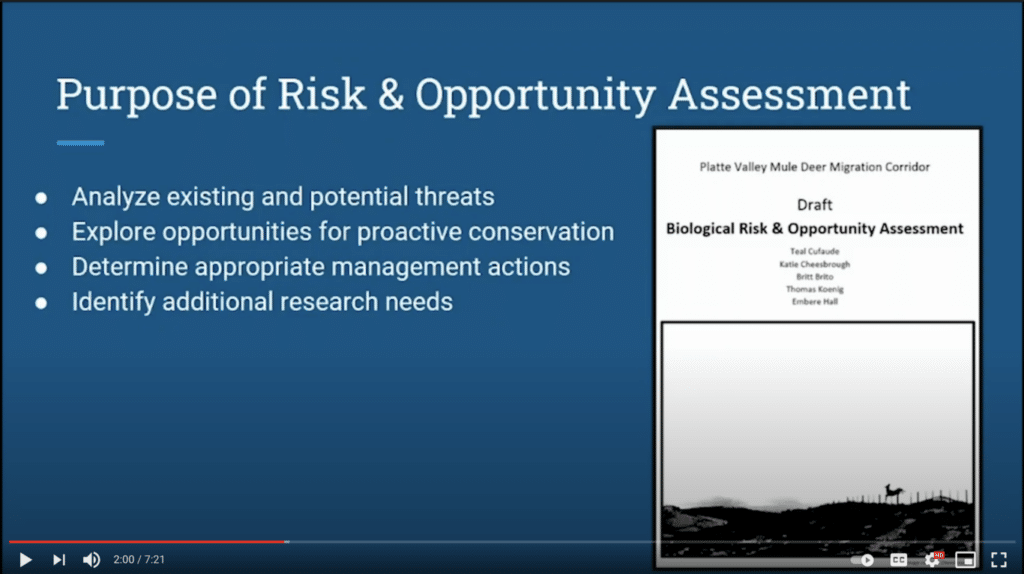
If the Commission chooses not to recommend designation, the corridor will remain identified but will not move forward in the process any further. If the Commission votes to recommend designation to the Governor, the Governor decides whether or not to continue the process.
The Governor’s Process
To continue working toward designation, the Governor will appoint an Area Working Group, which will consist of individuals from the region of Wyoming affected by the designation of the proposed corridor and represent different stakeholder groups including hunting, conservation, and wildlife, motorized outdoor recreation users, agriculture, and industries such as mining, renewable energy, and oil and gas. One county commissioner from each affected county will also be included, as well as tribal representatives if the corridor passes through the Wind River Reservation. The Platte Valley Mule Deer Migration Corridor was the first within the process to develop this Working Group.
The Working Group will meet to analyze the region-specific effects of corridor designation on jobs and the economy, habitat projects, and other factors specified by the Governor. They will draft a recommendation report for the Governor on their findings. The Governor will review the draft report and can then decide to return the corridor for further refinement, reject designation, or formally designate the migration corridor.
Do you have more questions about the EO on Migration Corridors? Check out these frequently asked questions!

